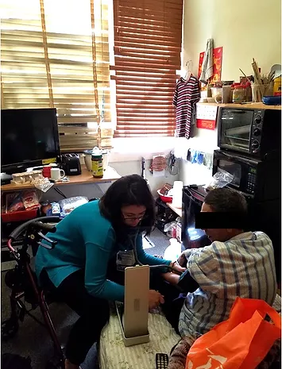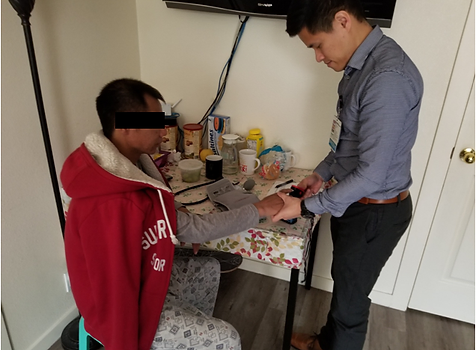Home Visit Program
Home Visit Program
The Highland Home Visit Program was started in 2016 as a way to more effectively meet our patients' needs by providing care directly in their community. All residents conduct two home visits per year by selecting their most vulnerable patients whom they cared for in the hospital or are on their primary care panel. A main objective of the program is to facilitate residents' understanding of how social determinants of health have profound downstream effects on health and illness. Through the program, residents learn how to provide excellent patient-centered medical care for historically underserved and marginalized persons in their homes and on their terms.
Our program was awarded the 2024 Building Trust Through Diversity, Health Care Equity, Inclusion and Diagnostic Excellence in Internal Medicine Training Grant Program.
Overview of home visit process
Residents review components of a comprehensive house call using the INHOMESSS Checklist (adapted from American Family Physician)
•Immobility: Evaluate functional status
•Nutrition: Food in pantry? Ability to cook/store?
•Housing: Living space and neighborhood
•Other people: Who do they live with?
•Medications: Med rec and med storage
•Examinations: Targeted physical exam
•Safety: Home safety issues
•Spiritual health: Faith and wellbeing
•Services by home health agencies: Coordinate with home health
Residents complete a neighborhood biopsy using google maps and walkscore.com to review the Crime Score for Neighborhood, Walkability Score, Transit Score, Travel Time to clinic by Public Transport, Grocery Stores and parks within 1 mile radius.
Residents perform the home visit and complete SOAP notes using the home visit note template.
Resident reflections
•“The home visit transports you out of the sometimes anesthetized and impersonal environment of the hospital and into the private and intimate setting of someone’s home.”
“Although we try our best as providers to do patient centered care for every patient that we see in clinic, I see this as a true return to the original form of patient centered care.”
•“I also saw that the letter I wrote to have his landlord allow for support animals really paid off because he loved having his cats around and close to him!”
•“I hadn’t realized the incredible amount of work the family put in to keep the patient relatively independent despite her significant disability, and I likely never would have understood it if I limited my interactions with the patient to the clinic.”
•“I have a newfound respect for him after hearing how much he has been through and how hospitable and bright he still is despite his far-from-ideal circumstances”




